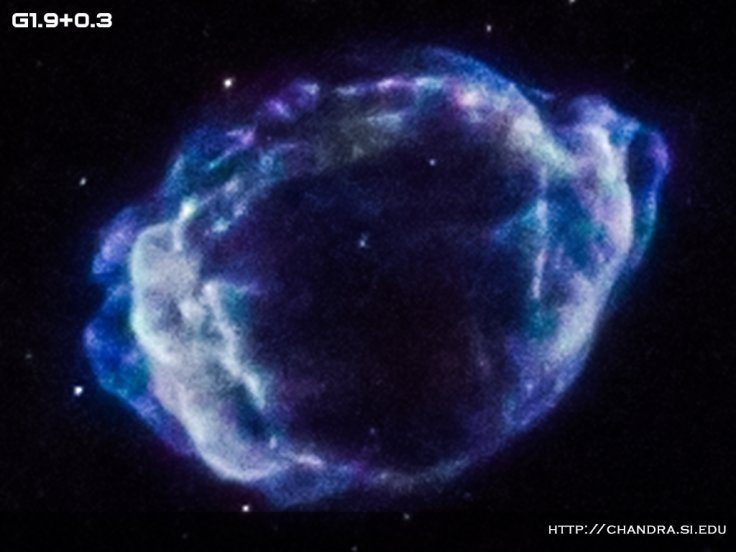NASA recently shared a mesmerizing photo of the youngest supernova remnant in the Milky Way galaxy. According to the agency, the massive cosmic structure may have been formed by an explosion following the collision of stars.
The photo shared by the agency was captured by the Chandra X-ray Observatory. It features the supernova remnant known as G1.9+0.3 and lies in the Sagittarius constellation, about 27,700 light-years from Earth.

Observing The G1.9+0.3 Supernova Event
As the youngest supernova remnant in Milky Way, NASA noted that G1.9+0.3 is still growing. This is characterized by its expanding shockwave that was caused by a powerful stellar explosion. Currently, the supernova remnant measures about 10 light-years across. G1.9+0.3 is officially classified as a Type Ia supernova. This means that the massive stellar explosion occurred in a binary star system. In this type of supernova event, one of the stars that caused the explosion is a white dwarf.
"Most scientists agree that Type Ia supernovas occur when white dwarfs, the dense remnants of Sun-like stars that have run out of fuel, explode," NASA explained in a statement. "However, there has been a debate over what triggers these white dwarf explosions."
Understanding How G1.9+0.3 Exploded
To determine the cause behind G1.9+0.3's explosion, researchers used the data collected by Chandra to understand how the supernova event interacts with its surroundings. By studying the emissions of the supernova remnant as well as the interaction between the expanding explosion and the surrounding gas and dust, researchers were able to narrow down the cause of the event.
According to researchers, it is possible that the supernova event was triggered by the collision of white dwarf stars that occurred after they got locked into each other's' orbit. Eventually, the two stars spiralled inward and collided with one another. It is also possible that the supernova event was caused by a combination of a collision and absorption of materials from a nearby star.
"This result implies that Type Ia supernovas are either all caused by white dwarf collisions, or are caused by a mixture of white dwarf collisions and the mechanism where the white dwarf pulls material from a companion star," NASA stated.








